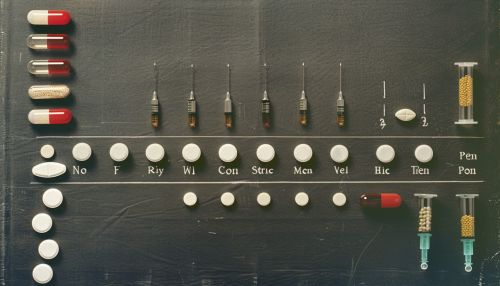Performance-enhancing drugs
Introduction
Performance-enhancing drugs (PEDs) are substances used by athletes and individuals to improve their physical abilities and gain an advantage in competitive sports. These substances, which include anabolic steroids, stimulants, hormone and metabolic modulators, and diuretics, can enhance strength, speed, endurance, and other athletic abilities. However, their use is often associated with serious health risks and ethical concerns, leading to their prohibition in most sports organizations worldwide Read more.
History
The use of substances to enhance performance is not a new phenomenon. It can be traced back to ancient times when athletes in Greece were known to use special diets and potions to improve their athletic prowess. However, the modern history of performance-enhancing drugs began in the early 20th century with the discovery of anabolic steroids and other synthetic substances Read more.


Types of Performance-Enhancing Drugs
There are several types of performance-enhancing drugs, each with its own mechanism of action and potential side effects.
Anabolic Steroids
Anabolic steroids are synthetic substances similar to the male hormone testosterone. They promote the growth of skeletal muscle and increase lean body mass. Athletes often use these drugs to enhance strength, endurance, and performance, despite the associated health risks Read more.
Stimulants
Stimulants are substances that increase alertness, attention, and energy. They can also increase heart rate and blood pressure, which can enhance endurance and delay fatigue. Common stimulants used in sports include amphetamines, caffeine, and cocaine Read more.
Hormone and Metabolic Modulators
Hormone and metabolic modulators are substances that modify the body's use of energy and promote the production of hormones. They include substances like insulin, human growth hormone (HGH), and erythropoietin (EPO) Read more.
Diuretics
Diuretics are substances that increase the production of urine, leading to rapid weight loss. They are often used in sports where weight classes are involved, such as boxing and wrestling Read more.
Health Risks
The use of performance-enhancing drugs is associated with a number of health risks. These include cardiovascular problems, liver damage, hormonal imbalances, psychiatric disorders, and increased risk of death. The risks are often higher when these substances are used in high doses or for prolonged periods Read more.
Ethical Considerations
The use of performance-enhancing drugs raises several ethical issues. These include the violation of the spirit of sport, unfair advantage, and the pressure to use these substances in a highly competitive environment. There are also concerns about the influence of these practices on young athletes and the societal perception of sport Read more.
Detection and Doping Control
In order to maintain the integrity of sport, most sports organizations have implemented strict anti-doping policies. These include the use of sophisticated testing methods to detect the presence of performance-enhancing drugs in athletes' bodies. However, the detection of these substances is often challenging due to the constant development of new drugs and doping methods Read more.
Legal Aspects
The legal status of performance-enhancing drugs varies by country. In some countries, these substances are classified as controlled substances and their use, possession, and distribution are subject to legal penalties. In addition, athletes who test positive for these substances can face sanctions from their sports organizations, including disqualification and suspension Read more.
Conclusion
Performance-enhancing drugs continue to be a controversial issue in the world of sport. While they can provide athletes with a competitive edge, their use is associated with significant health risks and ethical concerns. As such, it is important for athletes, coaches, and sports organizations to promote fair play and the health and well-being of athletes.
